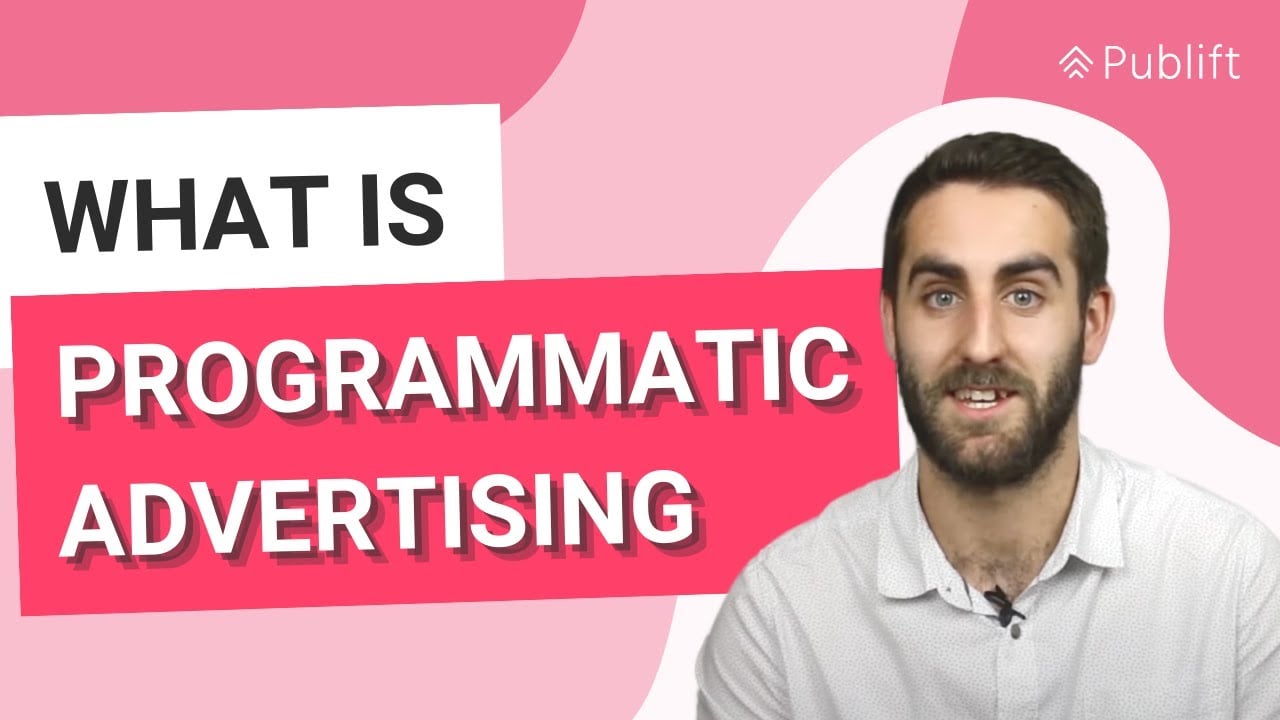timeReal-Time Bidding (RTB) Advertising, also known as Programmatic Advertising, has revolutionized the way digital ads are bought and sold. Unlike traditional methods where ad space was negotiated and purchased in advance, RTB allows advertisers to bid for available ad impressions in real time. This auction-based system has become increasingly significant in the digital advertising landscape.
With the rise in internet usage and the proliferation of online platforms, the need for efficient and effective advertising has become crucial. RTB Advertising emerged as a solution to this growing demand, offering a streamlined and automated process for advertisers to reach their target audience. By harnessing the power of data and algorithms, advertisers can now make informed bids in milliseconds, maximizing their chances of reaching the right consumer, at the right time, with the right message.
One fascinating statistic that underscores the significance of RTB Advertising is the exponential growth of programmatic ad spending. According to eMarketer, programmatic ad spend in the United States alone is projected to reach $130 billion by 2023, accounting for more than 88% of all digital display ad spending. This indicates the industry’s confidence in the effectiveness and efficiency of RTB Advertising as a powerful tool for reaching and engaging consumers.
The advancements in data analytics and machine learning have transformed RTB Advertising into a cutting-edge technology that optimizes ad targeting and personalization. By analyzing user behavior, demographics, and contextual data in real time, advertisers can serve relevant ads to specific audiences, ensuring that their ad spend is maximized and wasted impressions are minimized. This level of precision has never been possible with traditional advertising methods, making RTB Advertising a game-changer for marketers across various industries.
RTB Advertising has also paved the way for greater transparency and control for both advertisers and publishers. With the ability to track ad impressions, clicks, and conversions in real time, advertisers can gain valuable insights into the performance of their campaigns, allowing them to make data-driven decisions and optimize their strategies accordingly. Additionally, publishers can monetize their ad inventory more effectively by auctioning off their impressions to the highest bidder, ensuring fair market value for their valuable ad space.
In conclusion, RTB Advertising has revolutionized the digital advertising landscape by providing a real-time, data-driven approach to ad buying and selling. With its automated auction system, precise targeting capabilities, and transparent performance tracking, RTB Advertising has become an indispensable tool for advertisers looking to reach their target audience effectively and efficiently in today’s digital world.
Table of Contents
- What is RTB Advertising and How Does it Work?
- Understanding the Acronym: RTB Advertising
- Real-Time Bidding (RTB)
- The RTB Advertising Ecosystem
- The Benefits of RTB Advertising
- RTB Advertising in Numbers
- FAQ 1: What does RTB stand for?
- FAQ 2: How does Real-Time Bidding work?
- FAQ 3: What is an ad impression?
- FAQ 4: Who is involved in the RTB process?
- FAQ 5: What are ad exchanges?
- FAQ 6: What are demand-side platforms?
- FAQ 7: How is the bidding done in RTB?
- FAQ 8: What is the role of data in RTB?
- FAQ 9: Can advertisers target specific demographics using RTB?
- FAQ 10: Is RTB more cost-effective than traditional advertising?
- FAQ 11: Are there any drawbacks to RTB advertising?
- FAQ 12: How is RTB different from direct ad buys?
- FAQ 13: Can small businesses benefit from RTB advertising?
- FAQ 14: What is programmatic advertising?
- FAQ 15: Is RTB the same as display advertising?
- Conclusion
What is RTB Advertising and How Does it Work?
RTB Advertising, also known as Real-Time Bidding Advertising, is a programmatic advertising method that allows advertisers to reach their target audience in real-time. Through an online auction system, advertisers bid on ad space across various websites and apps, with the winning ad being displayed to the user. This article will discuss the concept of RTB Advertising in more detail, including its advantages, working mechanism, and how it can benefit businesses.
Understanding the Acronym: RTB Advertising
If you are involved in the world of digital marketing, you may have come across the acronym RTB advertising. So, what does RTB stand for and what does it mean for the advertising landscape? Let’s dive into the core sections to understand the intricacies of RTB advertising and its impact on the industry.
Real-Time Bidding (RTB)
RTB stands for Real-Time Bidding, which is a process that allows advertisers to buy digital ad placements on a per-impression basis. Unlike traditional advertising methods where ad spaces are bought in bulk, RTB enables advertisers to bid on individual ad impressions in real time.
This auction-style process takes place within milliseconds as a user loads a webpage or mobile app. Advertisers use specialized platforms called demand-side platforms (DSPs) to bid on impressions, targeting specific audiences and demographics.
RTB advertising has gained popularity due to its efficiency and effectiveness. It allows advertisers to reach their target audience with precision, delivering personalized ads in real time based on user data and insights. This level of granular targeting ensures that advertisers make the most out of their advertising budget.
The RTB Advertising Ecosystem
In order to understand RTB advertising, it is essential to grasp the various players involved in the ecosystem. Let’s take a closer look at the key stakeholders:
- Publishers: These are the owners of websites or mobile apps that provide ad inventory for sale.
- Advertisers: Brands or businesses looking to promote their products or services through digital advertising.
- Ad Exchanges: Platforms that facilitate the buying and selling of ad impressions in real time.
- DSPs: Demand-side platforms used by advertisers to manage and optimize their ad campaigns.
- SSPs: Supply-side platforms that help publishers maximize their ad inventory revenue.
These stakeholders work together in a complex ecosystem where bids, impressions, and ad placements are exchanged in real time, ensuring that the right ad is delivered to the right user at the right time.
The Benefits of RTB Advertising
RTB advertising offers several advantages over traditional advertising methods:
- Precision Targeting: RTB allows advertisers to target specific audiences based on their demographics, behavior, and interests. This precision targeting maximizes the relevancy of ads, resulting in higher engagement and conversion rates.
- Real-Time Optimization: Through continuous monitoring and analysis, advertisers can adjust their bids and targeting parameters in real time to optimize campaign performance. This flexibility ensures that their ads are always reaching the most valuable audiences.
- Cost Efficiency: By bidding on impressions individually, advertisers can avoid wasteful spending on irrelevant audiences. They have more control over their budget and can allocate it to the impressions that are most likely to drive results.
- Improved ROI: The precise targeting, real-time optimization, and cost efficiency of RTB advertising ultimately lead to a higher return on investment. Advertisers can measure and attribute the impact of their ads more accurately, making data-driven decisions.
RTB Advertising in Numbers
As of 2021, RTB advertising accounts for a significant portion of the digital advertising market. According to a report by eMarketer, RTB ad spending in the United States alone is projected to reach $34.46 billion in 2021, representing 87.5% of total programmatic digital display ad spending.
This statistic emphasizes the growing importance of RTB advertising in the industry and highlights its role in shaping the future of digital marketing.
FAQ 1: What does RTB stand for?
RTB stands for Real-Time Bidding.
FAQ 2: How does Real-Time Bidding work?
Real-Time Bidding is a type of programmatic advertising that allows advertisers to bid for ad impressions in real-time.
FAQ 3: What is an ad impression?
An ad impression refers to the display of an advertisement on a publisher’s website or app.
FAQ 4: Who is involved in the RTB process?
The key stakeholders in the RTB process are advertisers, publishers, ad exchanges, and demand-side platforms (DSPs).
FAQ 5: What are ad exchanges?
Ad exchanges are platforms where publishers can sell their ad inventory and advertisers can buy it in real-time.
FAQ 6: What are demand-side platforms?
Demand-side platforms (DSPs) are tools used by advertisers to manage and optimize their ad campaigns across multiple ad exchanges.
FAQ 7: How is the bidding done in RTB?
In RTB, bidding is done through an automated auction where advertisers submit their bids for available ad impressions.
FAQ 8: What is the role of data in RTB?
Data plays a crucial role in RTB as advertisers use audience data to target specific users with their ads.
FAQ 9: Can advertisers target specific demographics using RTB?
Yes, advertisers can target specific demographics such as age, gender, location, interests, and more using RTB.
FAQ 10: Is RTB more cost-effective than traditional advertising?
RTB can be more cost-effective as advertisers only pay for the impressions that are valuable to them, reducing wasted ad spend.
FAQ 11: Are there any drawbacks to RTB advertising?
One drawback of RTB advertising is the potential for ad fraud or low-quality ad placements on certain websites.
FAQ 12: How is RTB different from direct ad buys?
RTB allows for real-time bidding and ad targeting, while direct ad buys involve manual negotiations and fixed ad placements.
FAQ 13: Can small businesses benefit from RTB advertising?
Yes, small businesses can benefit from RTB advertising as it provides access to a wide range of ad inventory and targeting options.
FAQ 14: What is programmatic advertising?
Programmatic advertising refers to the automated buying and selling of ad inventory in real-time using technology and data.
FAQ 15: Is RTB the same as display advertising?
No, RTB is a subset of display advertising that focuses on the real-time buying and selling of ad impressions.
Conclusion
RTB advertising, or Real-Time Bidding, is a powerful and efficient way for advertisers to reach their target audience. Through the use of sophisticated algorithms and data-driven insights, RTB enables advertisers to bid for ad placements in real-time, ensuring that their ads are shown to the right people at the right time. The key advantages of RTB advertising include improved targeting, increased transparency, and greater cost-efficiency.
One of the key benefits of RTB advertising is its ability to improve targeting. By using data to understand and analyze consumer behavior, advertisers can create highly personalized ad campaigns that are tailored to individual users. This level of targeting ensures that ads are relevant and engaging, increasing the chances of conversion. Furthermore, RTB allows for granular targeting based on a range of parameters such as location, demographics, and browsing behavior, allowing advertisers to reach their ideal audience with precision.
Another advantage of RTB advertising is the increased transparency it provides. Advertisers have full visibility into the performance of their campaigns, with real-time data and analytics that show impressions, clicks, and conversions. This transparency allows advertisers to quickly and effectively optimize their campaigns based on the data insights, ensuring maximum ROI. Additionally, RTB advertising provides advertisers with more control over their ad placements, as they can choose where their ads are shown and avoid irrelevant or low-quality placements.
Lastly, RTB advertising brings cost-efficiency to ad campaigns. With real-time bidding, advertisers can optimize their bids based on the value of each impression, ensuring that they pay the right price for ad placements. This dynamic pricing model allows advertisers to maximize the effectiveness of their budget and eliminate unnecessary spending. Additionally, the data-driven nature of RTB advertising allows for constant optimization and improvement, further enhancing cost-efficiency.
In conclusion, RTB advertising is a powerful tool that brings targeted, transparent, and cost-efficient advertising solutions to advertisers. Through real-time bidding and data-driven insights, advertisers can reach their ideal audience, optimize their campaigns, and achieve higher ROI. With the continued advancement of technology and the increasing availability of data, RTB advertising is set to play an even more significant role in the future of digital advertising.












